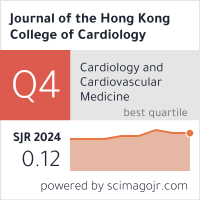Abstract
At least 20% of hospital admissions among persons older than 65 are due to heart failure (HF).1 In 1993, there were 875,000 hospitalizations in the United States with the first listed discharge diagnosis as HF, and about 2.5 million had it listed as an associated condition.2 Approximately 60 percent of health care expenditures for HF were for hospital care. There were three million office visits annually for HF at a cost of 3 billion dollars per year. Despite the advances of pharmacological therapies, revascularization procedures, device therapies and meticulous cardiac surgical techniques in the last decade, the short and long term mortality of this condition remains high. In the population based sample from the Framingham Heart Study, the one year mortality among men and women was 28 percent and 24 percent and five year mortality was 59 percent in men and 45 percent in women respectively.3 Unfortunately, much of our understanding and management of heart failure have been focused on while the patient is awake. Relatively little attention is paid to the pathophysiological sequelae of heart failure that occur nocturnally. "Nocturnal" management of heart failure may have an important impact. The purpose of this article is to review the pathogenesis and management of heart failure through management of sleep related breathing disorder.
Recommended Citation
Raymond Kin-Man Miu, Hung-Fat Tse, Chu-Pak Lau, Sleep Disordered Breathing and Heart Failure and the Role of Pacing and Cardiac Resynchronization Therapy Journal of the Hong Kong College of Cardiology 2006;14(1) https://doi.org/10.55503/2790-6744.1094
Creative Commons License

This work is licensed under a Creative Commons Attribution-Noncommercial-No Derivative Works 4.0 License.



